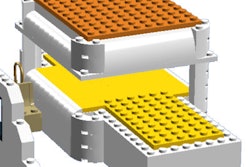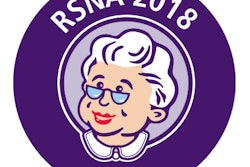
A four-year survey of more than 18,000 MRI scans within the Partners for Kids accountable care organization (ACO) showed an increasing need to anesthetize pediatric patients undergoing MRI scans, according to results published in the July issue of the Journal of the American College of Radiology.
The use of anesthesia increased despite stable MRI utilization among the young patients within the ACO, resulted in increased costs for an entity designed, in part, for cost containment.
"The most important finding of this study was the increase in the percentage of MRIs with anesthesia, rising from 21% in 2011 to 28% in 2014," wrote lead author Dr. Joshua Uffman, from Nationwide Children's Hospital in Columbus, OH, and colleagues. "This novel finding clarifies current trends in the need for sedation and anesthesia services and will assist with forecasting changing claims on the time and effort of pediatric anesthesia providers."
MRI's popularity
The use of MRI for pediatric patients has been on the rise in recent years, as clinicians tend to favor the modality for its lack of ionizing radiation compared to CT. There are challenges with MRI scans, however, such as claustrophobia, the need to administer contrast agents, and a child's tendency to move around, which produces less than stellar diagnostic images.
Distractions such as the use of video goggles and music have helped to calm some fidgety patients, but sedation or general anesthesia remains the standby strategy to successfully complete MR imaging studies.
Previous data on the rates of sedation and anesthesia have primarily come from single-center studies, Uffman and colleagues noted. Thus, they sought to explore trends and the related costs within the Partners for Kids ACO, which covers approximately 330,000 low-income children in central and southeastern Ohio (JACR, July 2017, Vol. 14:7, pp. 924-903).
The researchers surveyed claims data from Partners for Kids for newborn to 18-year-old patients who underwent one or more MRI scans from 2011 to 2014. During that time frame, there were 17,221 MRI encounters and 18,543 separate exams. Monthly MRI utilization was calculated as the number of MRI encounters per 10,000 members, while annual utilization was calculated as the number of encounters per 10,000 member-months.
To quantify costs related to increasing anesthesia and sedation rates, the researchers evaluated only outpatient MRI scans; the costs for inpatient MRI could not be separated from other charges related to inpatient admission. The analysis included 14,982 outpatient MRI encounters, which accounted for 16,026 scans and $11 million in paid costs.
Sedation and costs
During the four-year study period, 23% of all MRI encounters included sedation or anesthesia, with the frequency increasing from 21% in 2011 to 28% in 2014. While the rise was seen across all subgroups, the most pronounced increase was among 1- to 6-year-old patients, with a monthly increase of 0.64% (range, 0.30%-0.97%; p < 0.001) in the proportion of MRI scans using anesthesia. The smallest monthly increase was seen in the 7- to 12-year-old age group (0.42%; range, 0.30%-0.54%; p < 0.001).
Over the same four-year period, MRI utilization for pediatric patients remained relatively constant, rising from 11.4 encounters per 10,000 member-months in 2011 to 12.1 encounters per 10,000 member-months in 2014.
The ACO's costs related to outpatient pediatric MRI scans with anesthesia increased from $902 in 2011 to $1,116 in 2014. Similarly, annual utilization of MRI scans with anesthesia increased from 17% in 2011 to 23% in 2014.
"This finding of greater need for anesthesia to complete MRI examinations is novel and significant, especially in the setting of an ACO model dedicated to providing quality care with cost containment," the authors wrote.
Uffman and colleagues cited several limitations of the study, including the fact that its subjects were all enrolled in Medicaid and "may have a higher disease burden and different rate of utilization of diagnostic testing compared with the general pediatric population."
In addition, the cost data for MRI exams could not be calculated specifically for each encounter, thus the elimination of costs for inpatient scans. Further details about the underlying services related to MRI scans and related costs also were unavailable.



.fFmgij6Hin.png?auto=compress%2Cformat&fit=crop&h=100&q=70&w=100)




.fFmgij6Hin.png?auto=compress%2Cformat&fit=crop&h=167&q=70&w=250)











